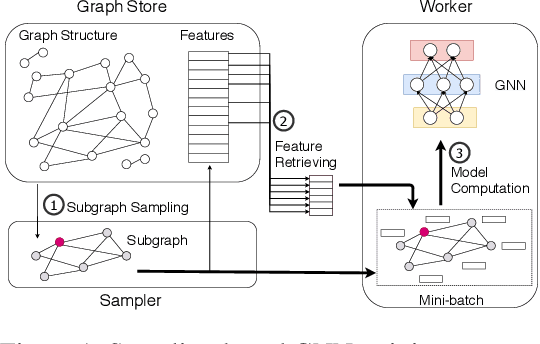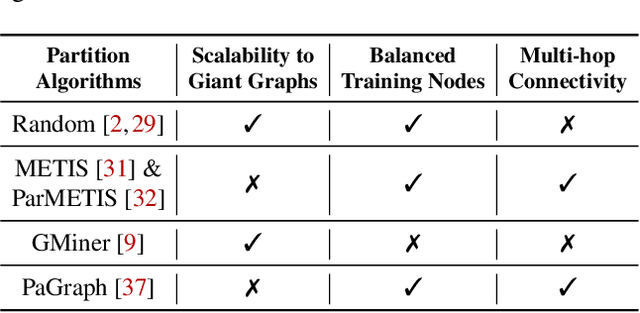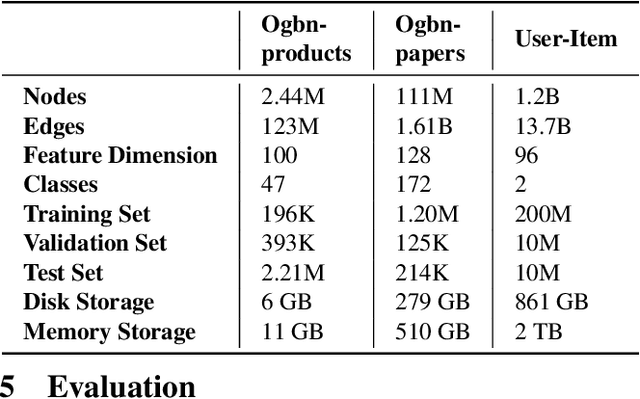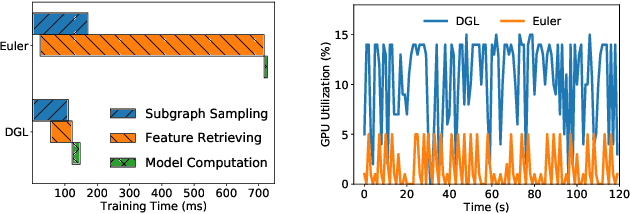BGL: GPU-Efficient GNN Training by Optimizing Graph Data I/O and Preprocessing
Paper and Code
Dec 16, 2021



Graph neural networks (GNNs) have extended the success of deep neural networks (DNNs) to non-Euclidean graph data, achieving ground-breaking performance on various tasks such as node classification and graph property prediction. Nonetheless, existing systems are inefficient to train large graphs with billions of nodes and edges with GPUs. The main bottlenecks are the process of preparing data for GPUs - subgraph sampling and feature retrieving. This paper proposes BGL, a distributed GNN training system designed to address the bottlenecks with a few key ideas. First, we propose a dynamic cache engine to minimize feature retrieving traffic. By a co-design of caching policy and the order of sampling, we find a sweet spot of low overhead and high cache hit ratio. Second, we improve the graph partition algorithm to reduce cross-partition communication during subgraph sampling. Finally, careful resource isolation reduces contention between different data preprocessing stages. Extensive experiments on various GNN models and large graph datasets show that BGL significantly outperforms existing GNN training systems by 20.68x on average.
 Add to Chrome
Add to Chrome Add to Firefox
Add to Firefox Add to Edge
Add to Edge